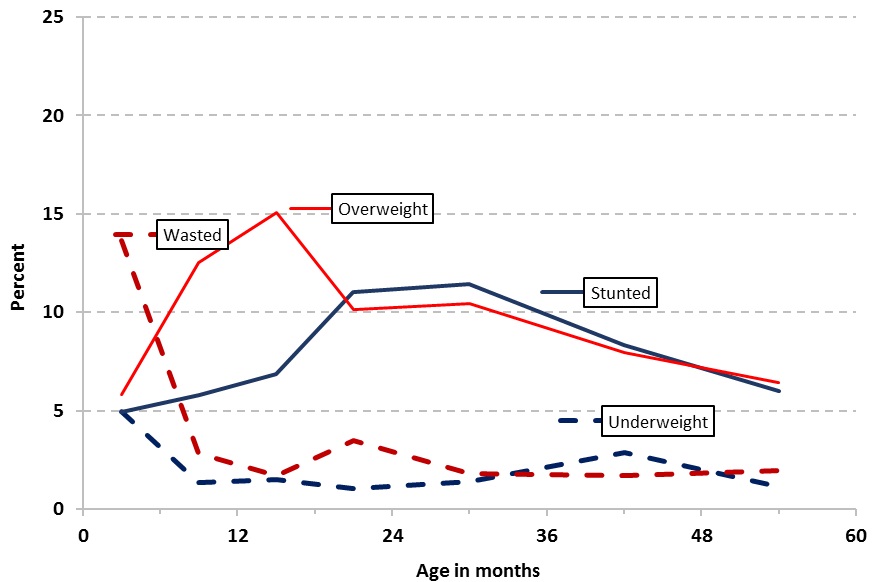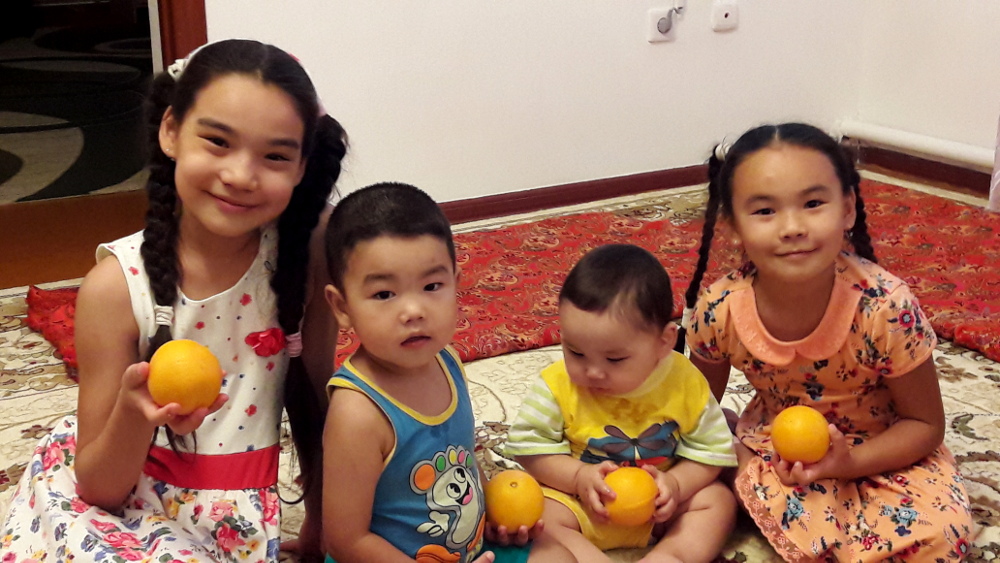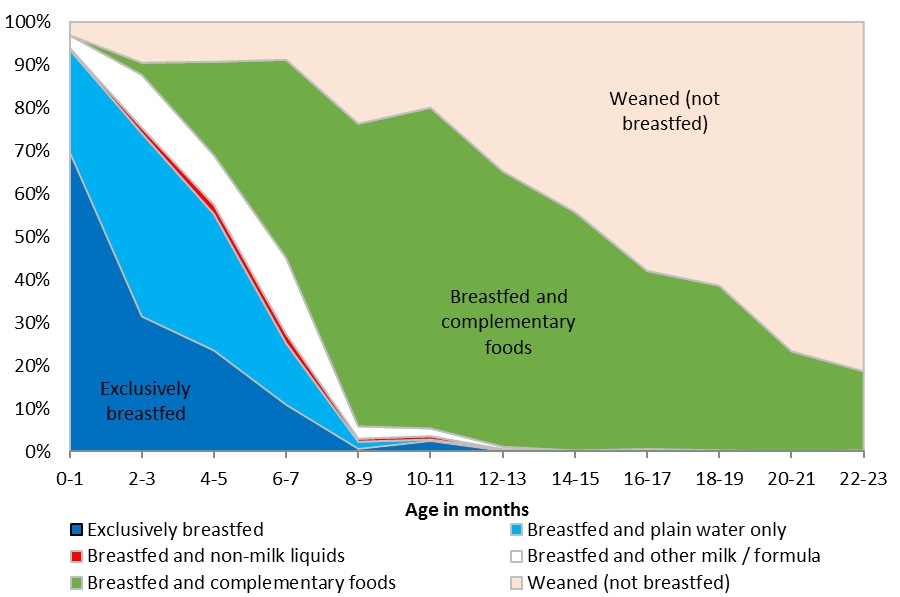Weight at birth is a good indicator not only of a mother's health and nutritional status but also the newborn's chances for survival, growth, long-term health and psychosocial development. Low birth weight (defined as less than 2,500 grams) carries a range of grave health risks for children. In the developing world, low birth weight stems primarily from the mother's poor health and nutrition.
In Kazakhstan, generally, 98.7 percent of newborns were weighed at birth; approximately 4.5 percent of newborns had birth weight less than 2,500 grams.
The prevalence of low birth weight in rural area (5.2 percent) is slightly higher than in urban area (3.8 percent) as well as among children whose mothers have secondary education (12.3 percent) and live in the poorest wealth quintile of households (12 percent).
Children’s nutritional status is a reflection of their overall health.
In Kazakhstan, 2.0 percent of children under age five are underweight. However, 8.0 percent of children are stunted and 3.1 percent of children are wasted for their height. In addition, 9.3 percent of children are overweight.
There is a clear relationship between the household wealth and children’s weight: the poorest children are more likely to be stunted while the richest are more likely to be overweight.


The Percentage of children aged 6-23 months who received a minimum dietary diversity, or foods from at least 4 groups of products accounted for 68.7 percent.
Breastfeeding in the first days of life protects children from infection, provides an ideal source of nutrients, and breastfeeding as well as economical and safe method of the feeding. Proper feeding of infants and young children can increase their chances of survival; it can also promote optimal growth and development, especially in the critical period from birth to 2 years of age.
Recently in Kazakhstan, the proportion of mothers who understand the critical importance of early breastfeeding and establishment of a physical and emotional relationship between the child and the mother increases.
Nine out of ten of children were breastfeeding within one day of birth and four out of ten of children 0-5 months of age were exclusively breastfeed.
Median duration of any breastfeeding was 15.6 months; exclusive breastfeeding – 1.8 months and predominantly breastfeeding - 4.9 months.
The Percentage of children aged 6-23 months who received a minimum dietary diversity, or foods from at least 4 groups of products accounted for 68.7 percent.
In the provision of recommended meal frequency with the minimum dietary diversity, as well as in the organization of minimum acceptable diet, the educational level of the mother plays an important role, as well as the level of household wealth.


During the survey, salt used for cooking in almost every (98.0 percent) household was tested using the salt test kits for the iodine content.
It was revealed that more than 90 percent of households consumed salt that contained iodine in the recommended amount of 15 ppm or more (91 percent); 3.7 percent of households used salt with low iodine content (less than 15 ppm). Only 0.6 percent of households had no salt.